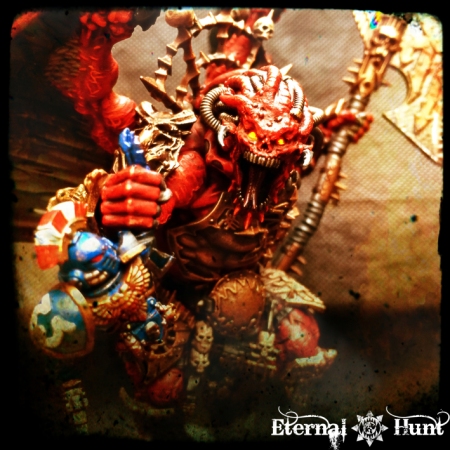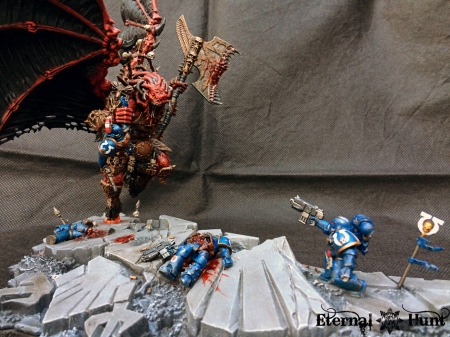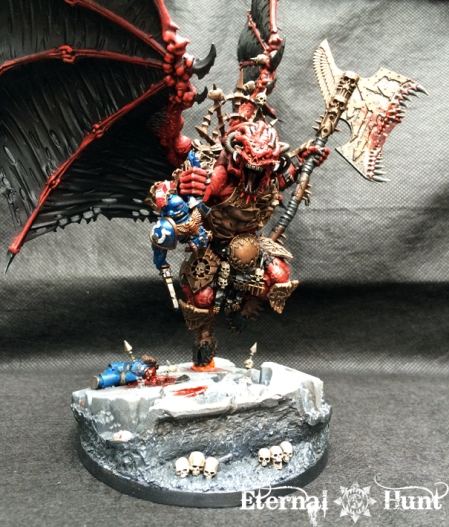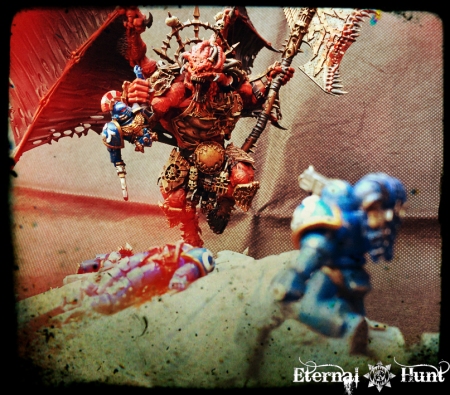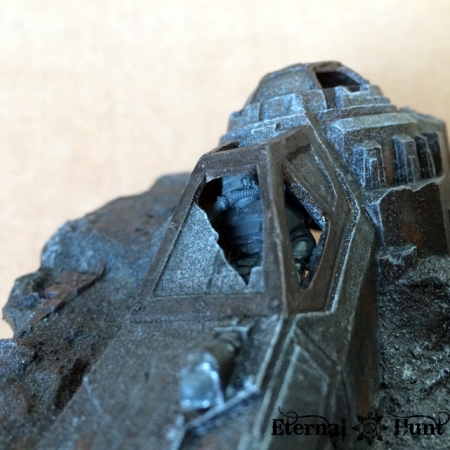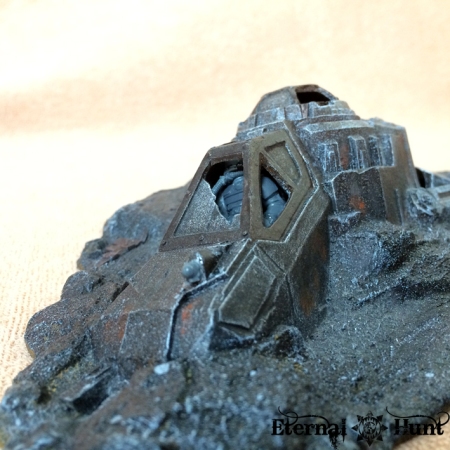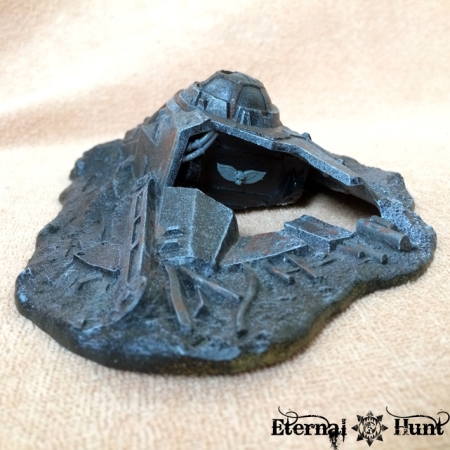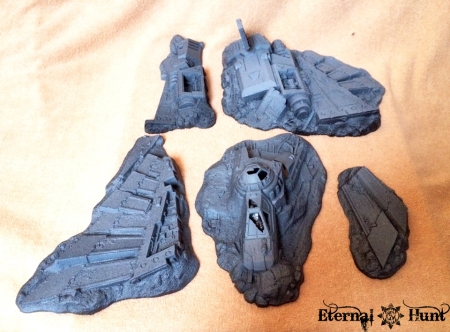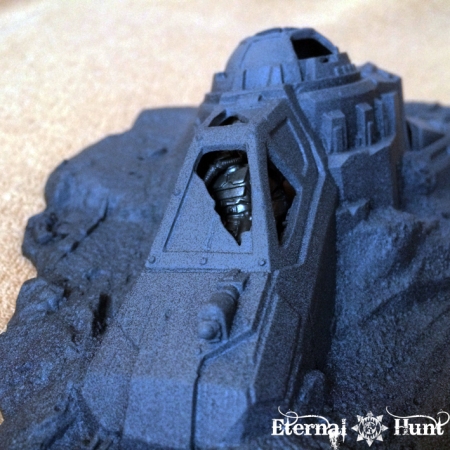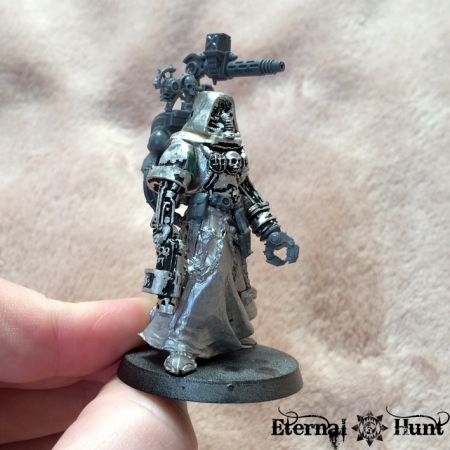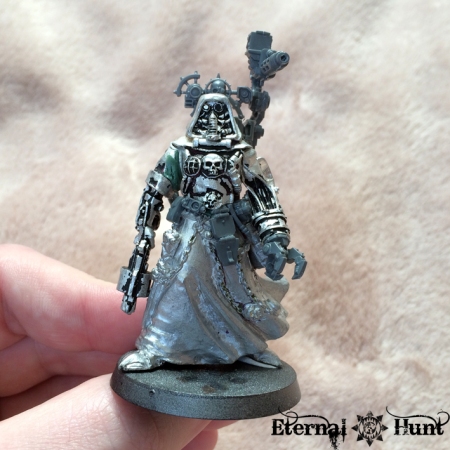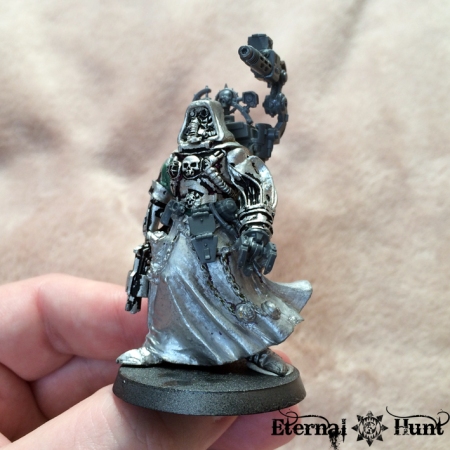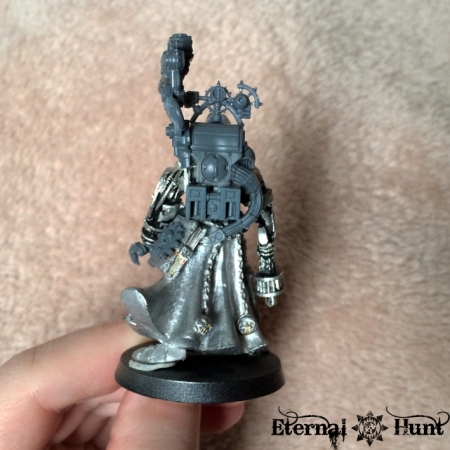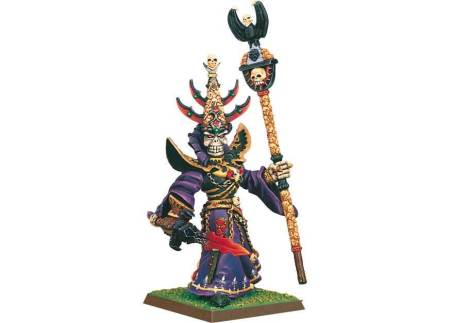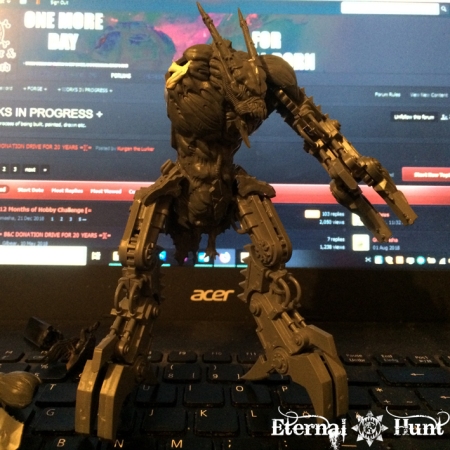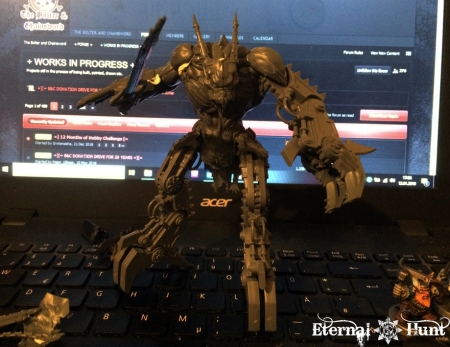With the Sorcerer’s Table and Alchemist’s Bench now officially done and dusted, I was left with two final pieces of HeroQuest furniture from this original set of four models left to paint:
It goes without saying that I remained committed to making each of these pieces as cool as I could — after all, the furniture is one of the things that makes the original HeroQuest boxed set such a classic!
I started with the weapon rack. Now this piece was interesting in that it’s really easy to make it look really dull — after all, the weapons stacked on the rack should be mostly silver, right? And you could even paint the rack itself silver as well and be home in time for dinner…
This was obviously the biggest possible pitfall to avoid here, so I chose to use a few spot colours to make a nice contrast with all of those silver blades. I also decided to paint the rack itself as wood, seeing how the sculpt itself suggested a bit of a wooden texture to the entire thing. I would be remiss not to mention how RemyT’s paintjob once again served as a major point of reference, although I chose to swap around a few colours.
Anyway, here’s the weapon rack with the first couple of base colours blocked in (and most of the wood already finished):
And a bit later, with all of the base colours in place:
This already gave me a good idea of the colour balance, so all that remained were some finishing touches. Unsurprisingly, the whole thing really came to life after the washed had been applied, especially when it came to making the metallic parts look more like metal and less like painted plastic:

From here on out, it was all a question of adding a few finishing touches and higlights, and I took my sweet time with this step.
The obvious problem with the weapon rack, as was pointed out to me by fellow hobbyist Anderas, is that it’s completely out of whack with the rest of the HeroQuest set when it comes to scale: Those weapons are really far too big to be wielded by any model appearing in the game, except maybe for the Gargoyle 😉 But I still cannot stop myself from liking the weapon rack immensely: It’s an interesting and fairly unique addition to HeroQuest’s set of furniture, and it was also fairly enjoyable to paint because it provided the perfect excuse to work with different colours in order to make all those weapons look suitably interesting and exotic.
Anyway, without further ado, here’s the finished weapon rack:


And, as an extra little bit of fun, here’s a comparison with my newly painted weapon rack and an older piece still sporting the earlier paintjob from elementary school days:
So, just one piece to go, and this last one represented a bit of a challenge: the Torture Rack:
So what was the challenge I mentioned? Well, as you can see, the stock torture rack has these weird handles that come as separate pieces. Those were missing on my version, long lost to some unremembered calamity (or, more likely, my general tendency for messiness). So I needed to think of a replacement while, at the same time, I really didn’t like the stock version: Those handles have always seemed so weird to me. So why not kill two birds with one stone (or rather, one torture rack) and work on a replacement that would seem more believable (and mechanically sound).
After a bit of scrounging around, I came up with this solution, thanks to some some leftover bits and bobs from my bitzbox:
Those handwheels somehow seemed far more believable to me, and they were really easy to make, too: The actual wheel can be any round slice of plastic, while the handles were made from cut-down spikes from one of those spike racks from the CSM vehicle sprue that any chaos player is sure to have dozens of 😉
The parts where the stock handles normally attach was carefully cut off before the handwheels were glued on, then reattached to work as a kind of spoke for the whole assembly.
I was pretty happy with this solution, and everything came together rather nicely when I undercoated the piece:
The paintjob itself was a fairly straightforward affair, because it was mostly about creating a suitably weathered wood effect on the rough planks of the torture rack, with some metallic accents here and there:
Of course the obvious fun came when the rack had been painted and it was time to crack open the Tamiya Clear Red for some added blood spatter. Take a look at the finished torture rack:
As a tribute to the older “paintjob”, I decided to place the bloodstains in almost exactly the same locations as before, only with a slightly more realistic look.
Before going for the bright, glossy look, I created a deeper layer of stains that look more faded and matte, mostly to hint at the fact that this torture rack has probably been in use for quite some time — brrrr…. 😦
And with that, the four missing pieces of furniture were finished. And I am honestly pretty chuffed with each and every one of them, to be honest:

All of this also makes for a pretty productive Easter holiday, if I do say so myself:
Even better, yet, this also marks the completion of the entire set of HeroQuest furniture. Here’s the complete collection, assembled for your viewing pleasure:
The prospect of getting to paint the furniture was what kept me going through some of the more grueling parts of this project — and rightly so, because I truly had a blast with those pieces! If you still have some of these somewhere in your cupboard of shame, I can only recommend giving them a spin — it’s highly enjoyable, and it taught me more about painting wood than my entire 30 years in the hobby that came before 🙂
However, I was so happy with myself about all that painted furniture that I almost forgot a sizeable part of the HeroQuest boxed set that still needed to be painted — the doors!
Because the game comes with 21 bases for the cardboard doors that are such an integral part of the HeroQuest experience, and while those are hardly the flashiest part of the game, I would still need to paint them in order to be able to call my copy of HeroQuest truly painted.
I chose to go for the same stoney look I also used for the bases on all of the hero and monster models:
And while this made for a fairly quick and dirty approach, painting over almost 40 of those bases (because I still own almost two complete sets) took a bit of doing. A fair bit of my last hobby session at my friend Annie’s place was actually given over to the somewhat thankless task of painting, washing and drybrushing door bases:
But I soldiered on, and now the doors are done as well — including quite a few spares:
And last but not least, I was finally able to get my hands on the last component of the game that was still missing from my copy: the four character boards:
Now this was the one instance where I had to venture into the den of madness that is trying to buy HeroQuest items off ebay, but I got an okay deal, the boards got here without further damage, and they are in fairly good condition, considering their age, so all’s well that ends well.
And with that, I have actually completed my HeroQuest set (minus the twelve Men-at-arms, but those will have to wait for a bit yet). And of course I am not entirely without ideas for future additions to my collection.
That will have to wait for a bit, however, as does a proper photographic exploration of the finished set — that’s what you can look forward to for next week’s update. For now, I would love to hear your thoughts about this week’s update, so please feel free to leave a comment! And, as always, thanks for looking and stay tuned for more!









































































